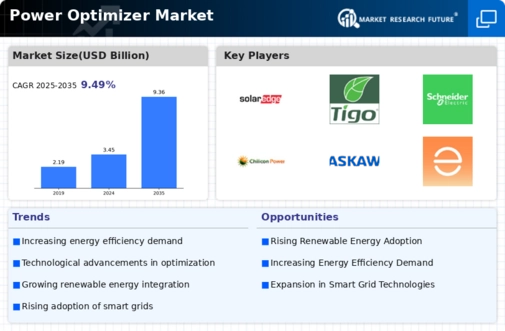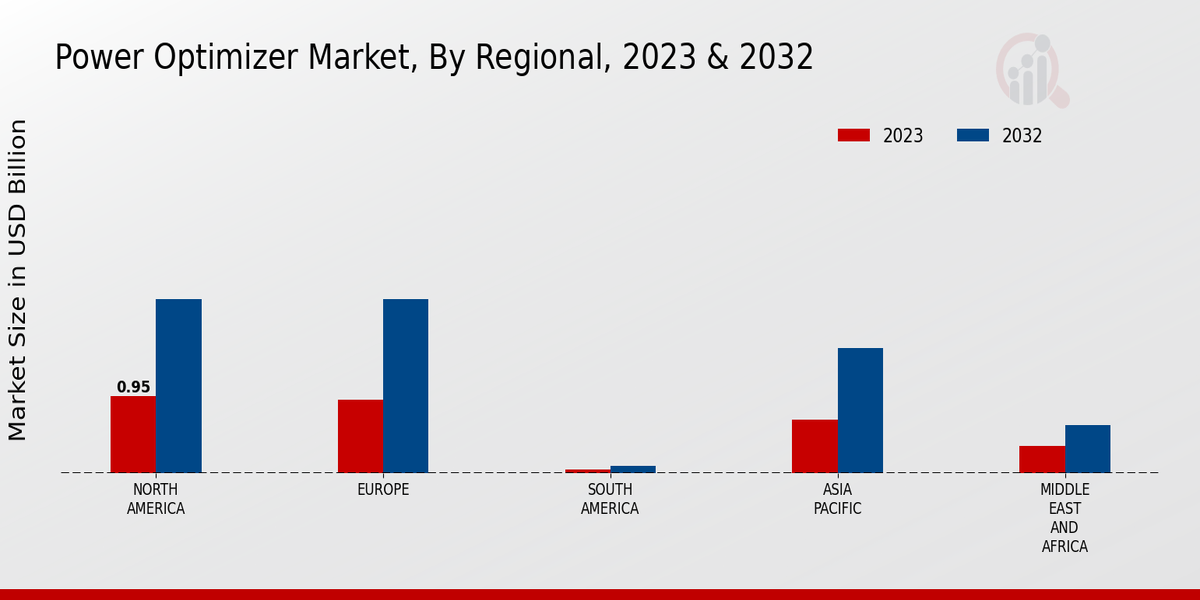Market Growth Projections
The Global Power Optimizer Market Industry is projected to witness substantial growth in the coming years. The market is expected to reach 3.45 USD Billion in 2024 and is forecasted to expand to 9.36 USD Billion by 2035. This growth trajectory suggests a compound annual growth rate (CAGR) of 9.5% from 2025 to 2035. Such projections indicate a robust demand for power optimization technologies as industries and consumers increasingly prioritize energy efficiency and sustainability. The anticipated growth reflects the evolving landscape of energy management and the critical role that power optimizers will play in shaping the future of energy consumption.
Government Incentives and Support
Government initiatives and incentives are playing a pivotal role in the growth of the Global Power Optimizer Market Industry. Many countries are offering financial incentives, tax credits, and subsidies to promote the adoption of energy-efficient technologies. These measures encourage consumers to invest in power optimizers as part of their renewable energy systems. For example, various states in the United States have implemented rebate programs for solar energy installations that include power optimizers. Such support not only boosts market growth but also fosters a favorable environment for innovation and development within the industry.
Growing Demand for Renewable Energy
The Global Power Optimizer Market Industry is experiencing a surge in demand for renewable energy solutions. Governments worldwide are implementing policies to promote the adoption of renewable sources, such as solar and wind energy. This shift is driven by the need to reduce carbon emissions and combat climate change. For instance, the global renewable energy capacity is projected to reach 3.45 USD Billion in 2024, indicating a robust growth trajectory. As more consumers and businesses seek sustainable energy options, power optimizers play a crucial role in enhancing the efficiency of renewable energy systems, thereby contributing to the industry's expansion.
Rising Energy Costs and Efficiency Needs
The escalating costs of energy are prompting consumers and businesses to seek more efficient energy solutions, thus driving the Global Power Optimizer Market Industry. As energy prices continue to rise, the need for technologies that enhance energy efficiency becomes more pronounced. Power optimizers help reduce energy waste and improve the overall performance of solar energy systems, making them a valuable investment. The market is projected to reach 9.36 USD Billion by 2035, reflecting the growing recognition of the importance of energy efficiency in mitigating costs. This trend underscores the critical role of power optimizers in addressing the challenges posed by rising energy expenses.
Increasing Awareness of Energy Efficiency
There is a growing awareness among consumers and businesses regarding the importance of energy efficiency, which is positively impacting the Global Power Optimizer Market Industry. Educational campaigns and information dissemination about the benefits of power optimizers are leading to increased adoption rates. As organizations strive to meet sustainability goals, the demand for energy-efficient solutions is rising. This trend is further supported by the global push towards reducing carbon footprints and enhancing energy conservation practices. Consequently, power optimizers are becoming integral to energy management strategies, contributing to the overall growth of the market.
Technological Advancements in Energy Management
Technological innovations are significantly influencing the Global Power Optimizer Market Industry. The development of advanced energy management systems, including smart grid technologies and IoT integration, is enhancing the performance and reliability of power optimizers. These advancements facilitate real-time monitoring and control of energy consumption, leading to optimized energy usage. As a result, the market is expected to grow at a CAGR of 9.5% from 2025 to 2035. This growth is indicative of the increasing reliance on technology to improve energy efficiency and reduce operational costs, making power optimizers an essential component of modern energy systems.






















